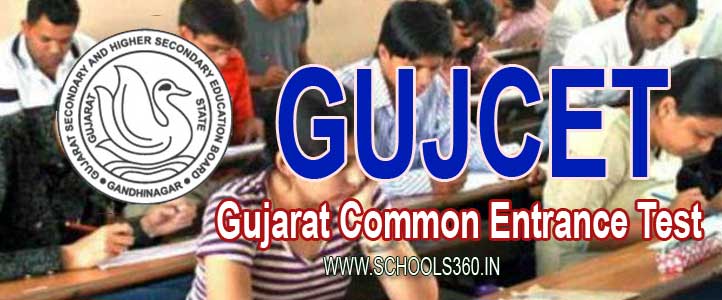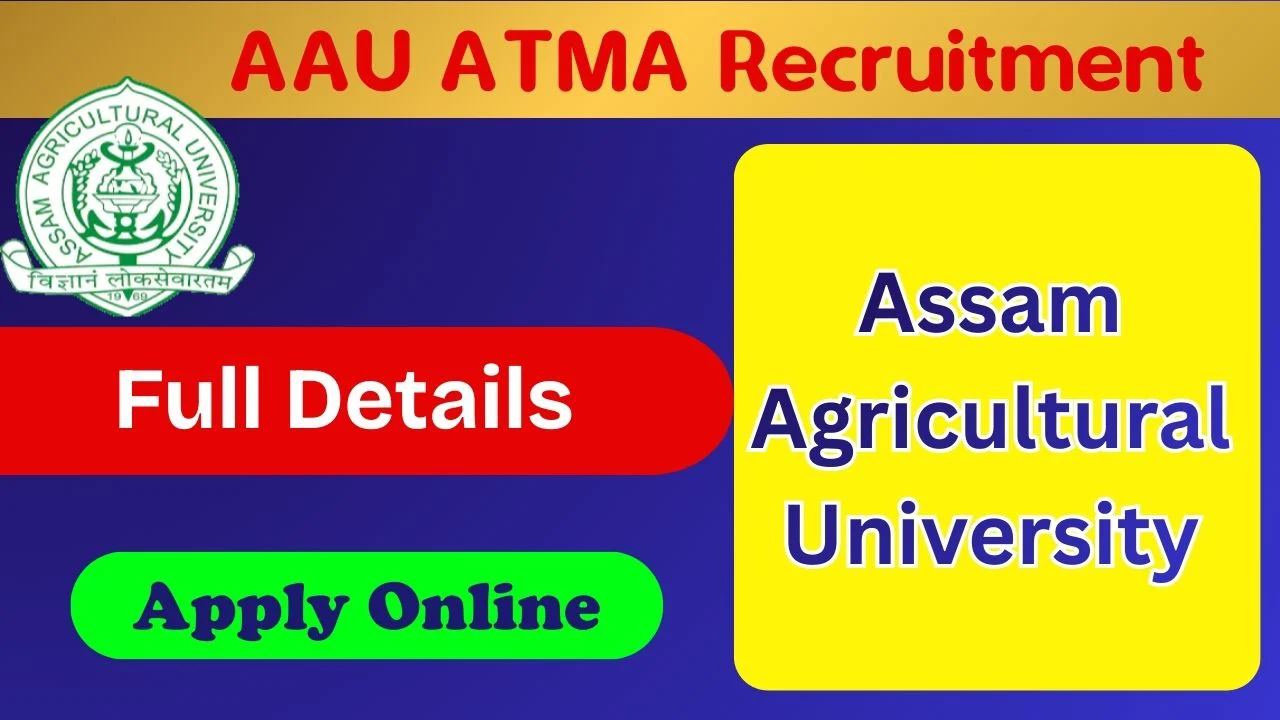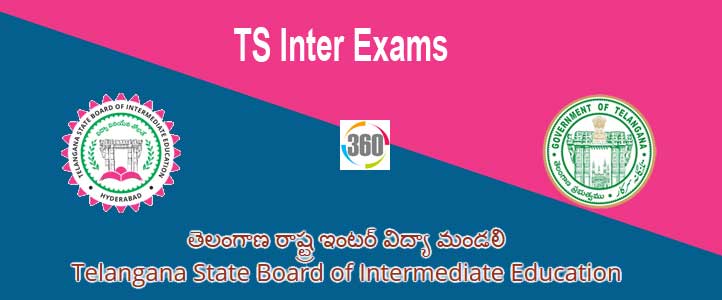| Subjects | Unit | Topics |
| Civil Engineering | Unit I- Engineering Mechanics | - Direct Stresses and strains (Tensile and compressive) due to Axial forces
- Deformation of elastic bar due to uni-axial force
- Shear force and bending moment diagrams for statically determinate beams
- Geometrical properties of sections
- Stresses in beams due to bending
- Stresses in shafts due to torsion
- Pin jointed perfect frames with vertical loads on nodal points (method of joints only).
|
| Unit II- Mechanics of Structure | - Deflection of cantilever and simply supported beams
- Shear force and bending moment diagrams for statically indeterminate structures (Propped cantilever, Fixed Beams, continuous beams, Non- sway Portal frames) using Mohr’s theorems and moment distribution method.
- Euler’s and Rankin’s formula for columns
- Stresses due to eccentric loads
- Combined stresses due to direct loads and bending moments in rectangular sections.
|
| Unit III- Construction Materials and Construction Practice | - Bricks, Tiles, Cement, Fine Aggregate, Coarse Aggregate, Timber, Plywood, Steel, Glass, Plastics, PVC, UPVC, Paints, Mortars, Concrete
- Different types, qualities, requirements, standard specifications, Admixtures for cement mortar and concrete.
- Different types of Foundations, Masonry, Floors, Roofs, Doors, and Windows, Weathering Course, Damp proof course, Plastering, Painting, Colour Washing
- Specifications for different works.
|
| Unit IV- Transportation Engineering | - Roads – Different types – methods of formation of water-bound macadam, bituminous and concrete roads
- Hill roads – Requirements – Camber, gradient, superelevation, carriageway, pavements, drainage system, sight distance, etc.,
- Traffic Engineering, Bridges
- Classification of bridges
- Site selection and alignment – Foundation, substructure, and superstructure.
- Sub-grade soil – Soil mass as a three-phase system
- Grain size classification – Atterberg limits
- IS Classification of soils–Compaction – Shear strength
- Road Arboriculture – Express Highways – Rapid Transport System.
|
| Unit V- Hydraulics | - Measurement of pressure in liquids
- Pressure distribution and the total pressure on immersed surfaces
- Types of flow (Laminar, turbulent, steady, unsteady, uniform, nonuniform)
- Flow-through pipes
- Losses – Hydraulic gradient and total energy lines.
- Bernoulli’s theorem – use of Orifice, Mouthpiece, Orifice meter and Venturi Meters
- Flow-through channels
- Bazin’s and manning’s formula
- Economical sections for open channels
- Pumps – Reciprocating pumps – Centrifugal pumps – Characteristics – Discharge, Power, and efficiency
- Groundwater – Types of well – Test for a yield of wells.
|
| Unit VI- Surveying | - Types of Surveys –Chain surveying – Compass surveying
- Leveling – Contour surveying – Theodolite surveying – Trigonometric leveling
- Tachometer
- Fieldwork
- Simple problems. Curves, Global Positioning System (GPS)
- Remote sensing – Photogrammetric Surveying and Hydrographic Surveying
- Total Station and Geographical Information System (GIS).
|
| Unit VII-Environmental Engineering and Pollution Control | - Sources of water
- Conveyance of water
- Treatment of water
- Quality of water
- Tests on the water
- Distribution systems
- Sewers
- Collection and conveyance of sewage
- Sewer Appurtenances
- Drainage arrangements and Sanitary fittings in buildings
- Treatment and disposal of sewage, Solid waste Management.
- Environmental pollution – Air – water – Soil – Noise
- Pollution Control.
|
| Unit VIII: Estimating and Costing | - Systems of taking out quantities
- Trade and Group systems
- Material requirement for different items of works
- Preparation of data for works
- Report writing
- Valuation of buildings and properties
- Fixation of rents
- Approximate estimates – Detailed estimate and Abstract estimate for buildings, well, sump, septic tanks, compound wall, roads, etc.
|
| Unit IX- Structural Engineering | - Reinforced cement concrete structure
- Analysis and design of singly and Doubly reinforced rectangular and T-beam sections – Cantilever, simply supported, continuous beams – One way and two-way slabs
- Lintels and sunshades
- Staircases
- Rectangular and circular short columns
- Isolated column footings. (All designs by Limit State Method only)
- Steel structures- simple beams
- Tension and compression members – simple columns.
|
| Unit X- Construction Management | - Planning of a project – Factors to be considered
- Project reports
- Organization structure on construction departments
- Construction planning – CPM and PERT networks
- Contracts – Tenders and Tender documents
- Bill- Supervision and Quality control
- Safety measures in construction sites – Banking practice – Cash flow diagrams.
- Entrepreneurship
- Ethics in Engineering
- Use of computers – Information Management, Financial Management
- Disaster Management – Types of Natural calamities – Causes for major disaster – Preparedness – Response and Recovery.
|
| Handloom Technology / Textile Technology/ Textile Manufacture | Unit I- Fibre Properties and Man-made Fibre Spinning | - Properties of textile fibers
- Classification of Textile fibers – vegetable, animal, mineral, regenerated, synthetic
- Microscopic, physical, and chemical test methods for fiber identification
- Physical & Chemical properties of Vegetable fibers – Cotton, Jute, linen
- Physical & Chemical properties of Animal fibers – Wool, Silk
- Physical & Chemical properties of Regenerated Cellulosic fibers – Viscose and Acetate Rayon, Cuprammonium Rayon
- Physical & Chemical properties of Synthetic fibers – Polyester, Nylon
- Requirements of fiber-forming polymers
- The spinning of Polymers – Melt Spinning, Wet spinning, Dry Spinning
- Post-Spinning Operations – Drawing, Crimping, Heat setting, Texturisation, and spin finish application
|
| Unit II- Spun Yarn Formation | - Ginning – Principle, machines, and gin out-turn.
- Objectives / Principles of opening, cleaning, and mixing/blending machines
- Working mechanisms of blow room, card, draw frame, comber, comber preparatory, speed frame, ring frame, doubling machinery.
- Salient features of blow room, card, draw frame, comber, comber preparatory, speed frame, ring frame, doubling machinery.
- Working principles and features of open-end spinning machines – rotor, air-jet, and air vortex
- Norms and Critical settings related to quality/production in spinning machinery. vii) Yarn conditioning, reeling, bundling, and baling
- Maintenance of spinning machines
|
| Unit III- Textile Calculations | - Calculations of speed, draft, hank, production, and efficiency in spinning machines.
- Production and efficiency calculations in Winding, Warping, Sizing, and Weaving
- Indirect count systems –English, French, Worsted, linen, and metric
- Direct count systems – Tex and Denier.
- Conversion of yarn count from one system to another -Within Indirect, within Direct systems
- Conversion of yarn count from indirect to direct systems and vice versa
- Resultant count of folded yarn, Average count, Yarn Costing
- Reed and heald calculations; Fabric cover, Fabric Costing.
|
| Unit IV- Fabric Formation | - Objectives of preparatory processes
- Preparatory processes for the handloom industry
- Warp winding – random and precision winding, winding drum parameters
- Stop motions, yarn clearers, tensioners, and knotters/splicers
- Warping –Types of warping, Creels, Length measurement, stop motion
- Working principles of Pirn winders
- Sizing –Ingredients, Size recipes for cotton, silk, and blends of cotton with polyester and viscose.
- Principles of Drawing-in and Denting.
- Primary, Secondary and Tertiary motions of the loom, Loom Timing diagram.
- Tappet, Dobby and Jacquardshedding, Handloom shedding motion, DropBox mechanism.
- Features of Pit loom, raised pit loom, frame loom, semi-automatic loom, and improved handlooms.
- Principles of Shuttleless Weft insertion systems.
- Maintenance of shuttle and shuttleless looms
- Fabric defects – causes and remedies
|
| Unit V- Fabric Structure | - Elements of woven fabric design – weave, draft, and peg plan
- Construction of Weaves – Plain weave and its derivatives, Regular and Modified Twills, Sateen and Satin, Crepe, Honeycomb, Brighton honeycomb, Mock-leno, Huck-a-back, Bedford cords, Welt, pique, backed cloth, Double Cloth, Triple Cloth, Tubular cloth, damask, tapestry, patent satin.
- Extra warp and Extra weft figuring
- Terry Pile – 3 picks, 4 picks, 5 picks, and 6 pick terry weaves.
- Cut Pile – Velvets and Velveteens.
- Gauze and Leno structures
- Colour and Weave Effect
- Computer-Aided Textile Designing (CATD) – Photoshop, Coreldraw, Paintshop Pro, and CAD software
|
| Unit VI- Chemical Processing | - Preparatory processes – Desizing, Scouring and Bleaching – Objectives, Machines, and Methods
- Mercerisation – Objectives, Machines, and Methods
- Dyeing techniques for cotton, silk, and blends– Direct, Reactive, Vat, Acid, Basic and Disperse dyes.
- Batchwise and Continuous dyeing. Dyeing machines.
- Styles of printing – Direct, Resist, Discharge.
- Printing techniques – Roller, Rotary Screen, Flatbed.
- Mechanical and chemical finishing – calendaring, anti-shrink, resin finish, water repellent finish, flame retardant finish.
|
| Unit VII- Knitting, Garments, and Modern Developments in Handlooms | - Knitting – Yarn quality requirements, principles of weft and warp knitting
- Basic weft and warp knitted structures and their properties – plain, rib, interlock, and purl.
- Garments – Pattern making, Spreading, Cutting, Sewing
- Developments in Handlooms – Solid border weaving, multiple putta weaving, pneumatic/electrical lifting devices for jacquard, electronic jacquard for handlooms.
|
| Unit VIII- Testing and Quality Control | - Important terms in Textile quality control – Mean, Median, Mode, SD, SE, and CV.
- Calculations related to testing of significance.
- Control charts and their applications in textile quality control.
- Sampling techniques – objectives and types of sampling
- Humidity control – Standard and Testing atmosphere, Measurement of Relative Humidity.
- Measurement of fiber length, strength, fineness, maturity, and trash
- Determination of yarn count, twist – Twist per unit length, twist multiplier; strength – CSP, RKM; elongation, hairiness, Evenness
- Determination of fabric strength, stiffness, handle, drape, thickness, GSM, crease-resistance, abrasion resistance, pilling resistance, air/water permeability, dimensional stability.
- Determination of fastness to washing, rubbing, light.
- Inspection and Merchandising.
|
| Unit IX- Nonwovens, Technical Textiles and Handloom Fabrics | - Classification of Nonwovens – Mechanical, Thermal, and Chemical bonded fabrics
- Technical Textiles- Belts, Tyre-cords, Coatedabrasives, Airbags, Flame Resistant fabrics, Ballistic protective fabrics, Geotextiles, Medical Textiles
- Quality Particulars of handloom fabrics – Sarees, dhotis, angavastram, bedsheets, towels, lungies, fabrics reserved for exclusive production on handlooms.
- Traditional handloom Sarees – Banaras, Kanchipuram, Jamdani, Paithani, Chanderi, Patola, Sungudi, Ikats of Andhrapradesh, and Orissa.
|
| Unit X- Textile Mill Management | - Plant location, layout, material handling in textile mills
- Selection and balancing of preparatory machines and looms
- Costing – Elements, Balance sheet, Profit& loss account
- Production, Planning & Control.
- Total Quality Management, Management Information System.
- Human Resources Management – Selection, recruitment, training, Industrial relations, and Labour laws
- Role of BIS, AEPC, HEPC, IIHT, WSC, Textile Committee, Textile Commissioner Office.
- New Textile Policy.
- Pollution Control: Types – Air, Water, Noise; Characteristics of Effluent and Effluent treatment of Wet Processing industry
- Energy audit and conservation.
|
| Architectural Assistantship | Unit I- Engineering Mechanics | - Simple Stresses and Strain
- Stress and Strain
- Modulus of Elasticity / Elastic constants
- Application of stress and strain in the engineering field
- The behavior of ductile and brittle material
- Loads
- Shear Force and Bending Moment
- Geometrical properties of sections
- Centroid
- Moment of Inertia
- Stress in Beams and Shafts
- Stresses in Beams due to bending
- Stress in shafts due to torsion
- Pin Jointed Frames
- Analytical Method
- Graphical Method.
|
| Unit II- Building Materials and Construction | Properties, characteristics, strengths, manufacturing, components & applications of materials & methods of construction & detailing for the following:- Stone
- Brick & Clay Products
- Lime
- Cement
- Timber
- Concrete
- Ferrous and Non-Ferrous Metals
- Glass
- Plastics
- Asphalt, Sealants & Adhesives
- Protective and Decorative Coatings
- WaterProofing and Dampproofing Materials
- Rural Building Materials(Bamboo, Soil, etc.).
|
| Unit III- History and Theory of Architecture | History of Architecture- Egyptian Architecture
- Greek Architecture
- Roman Architecture
- Early Christian & Byzantine Architecture
- Gothic Architecture
- Renaissance Architecture.Indian Architecture
- Indus Valley Civilization, Buddhist Architecture, Hindu Architecture
- Islamic Architecture in India.
- Modern Architecture, Postmodernism, Deconstructivism, Contemporary World Architecture.
Theory of Architecture - Definition of Architecture
- Architecture as satisfying functional, aesthetic & psychological human needs.
- Elements of Architecture – Form, Space, Light, color, etc.
- Principles of Architecture – Proportion, Balance, Scale, Symmetry, etc.
|
| Unit IV- Structural Engineering | - Slope and Deflection of Beams
- Propped Cantilevers
- Fixed Beams
- Arches
- Continuous Beams
- The theorem of Three Moments
- Continuous Beams
- Moment Distribution Method
- Columns and Struts
- Combined Bending and Direct Stresses
- Earth Pressure and Retaining Walls
- Working Stress Method Design of Beams for Flexure by L.S.M
- Design of T-Beams and Continuous Beams by L.S.M
- Design of Beams for Shear by L.S.M
- Design of Oneway Slabs by L.S.M
- Design of Two-way Slabs by L.S.M
- Design of Staircases by L.S.M
- Design of Columns by L.S.M
- Design of Column Footings
- Design of Simple Beams
- Design of Tension Members
- Design of Compression Members
- Design of Welded Connections.
|
| Unit V- Environmental Engineering | - Sources of Water
- Collections and Conveyance of Water
- Quality of Water
- Treatment of Water
- Distribution System
- Appurtenances and Maintenance of Water Lines
- Collections and Conveyance of Sewage
- Treatments and Disposal
- Environmental Pollution and Control
- Industrial Waste Water Treatment and Solid Waste Disposal – Land, Water & Air Pollution.
|
| Unit VI- Building Services | - Water Supply & Sewage Disposal
- Mechanical Systems – Pumps & Motors
- Electrical Systems – Generation & Distribution
- Ventilation & Lighting, Air Conditioning – Principles, systems & applications
- Vertical Transportation Systems
- Fire Hazards, Safety & Design Regulations, Acoustics.
|
| Unit VII- Site Survey and Planning | - Chain Surveying
- Compass Surveying
- Plane Table Surveying
- Leveling
- Theodolite
- Contouring
- Minor Instruments.
- Site Drawings
- Site marking
- Importance & procedures for making site drawings & dimensioning.
|
| Unit VIII- Specification and Estimation | - Stages of Detailed Estimate
- Measurements & Material Requirement
- Specification & Report Writing
- Approximate Estimates
- Areas and Volumes
- Data Valuation – Detailed Estimate.
|
| Unit IX- Town Planning | - Town Planning Principles
- Road and Street Planning
- Housing, Economy, Society, Environment and Transport Policy and Planning
- Town Planning Rules
- Building Bye-Laws & Development Control Rules.
|
| Unit X- Computer-Aided Drafting and Visualization | - 2D & 3D Drafting & Visualization
- Using AutoCAD, etc
- Setting limits and creating entities like LINE, ARC, CIRCLE, etc
- Editing the drawing with edit commands like TRIM, FILLET, COPY, MOVE, etc.,
- Creating 2D building working drawings. Visualization using SKETCH UP, 3DS MAX, etc
|
| General Studies | Unit I- General Science | Physics- Nature of Universe
- General Scientific laws
- Inventions and discoveries
- National scientific laboratories
- Mechanics and properties of matter
- Physical quantities, standards, and units
- Force, motion, and energy
- Magnetism, electricity, and electronics
- Heat, light, and sound.
Chemistry - Elements and Compounds
- Acids, bases, and salts
- Fertilizers, pesticides, insecticides
Botany - Main Concepts of life science
- Classification of a living organism
- Nutrition and dietetics
- Respiration
Zoology - Blood and blood circulation
- Reproductive system
- Environment, ecology, health, and hygiene
- Human diseases including communicable and non – communicable diseases – prevention and remedies
- Animals, plants, and human life.
|
| Unit II- Current Events | History- Latest diary of events-National
- National symbols
- Profile of States
- Eminent persons & places in the news
- Sports & games
- Books & authors
- Awards & honors
- India and its neighbors
Political Science - 1. Problems in the conduct of public elections
- 2. Political parties and political system in India
- 3. Public awareness & General administration
- 4. Welfare-oriented govt. schemes, their utility
Geography Economics - Current socio-economic problems
Science - Latest inventions in science & technology
|
| Unit III- Geography | - Earth and Universe
- Solar system
- Monsoon, rainfall, weather & climate
- Water resources-rivers in India
- Soil, minerals & natural resources
- Forest & wildlife
- Agricultural pattern
- Transport including surface transport & communication
- Social geography – population-density and distribution
- Natural calamities – Disaster Management.
|
| Unit IV- History and Culture of India and Tamil Nadu | - Indus valley civilization-Guptas, Delhi Sultans, Mughals, and Marathas
- Age of Vijayanagaram and the brahmans
- South Indian history-Culture and Heritage of Tamil people
- India since independence
- Characteristics of Indian culture
- Unity in diversity –race, color, language, custom
- India-as secular state
- Growth of rationalist, Dravidian movement in TN
- Political parties and populist schemes.
|
| Unit V- Indian Polity | - Constitution of India
- The preamble to the constitution
- Salient features of constitution- Union, state, and territory
- Citizenship-rights amend duties
- Fundamental rights
- Fundamental duties
- Human rights charter
- Union legislature
- Parliament
- State executive- State Legislature – assembly
- Local government – panchayat raj
- Tamil Nadu- Judiciary in India
- Rule of law/Due process of law
- 30 Elections
- Official language and Schedule-VIII
- Corruption in public life
- Anti-corruption measures
- CVC, Lok-adalats, Ombudsman, CAG
- Right to information
- Empowerment of women
- Consumer protection forms.
|
| Unit VI- Indian Economy | - Nature of Indian economy
- Five-year plan models-an assessment
- Land reforms & agriculture
- Application of science in agriculture
- Industrial growth-Rural welfare-oriented programmers
- Social sector problems – population, education, health, employment, poverty
- Economic trends in Tamil Nadu
|
| Unit VII- Indian National Movement | - National renaissance
- The emergence of national leaders-Gandhi, Nehru, Tagore
- Different modes of agitations
- Role of Tamil Nadu in freedom struggle Rajaji, VOC, Periyar, Bharathiar & others.
|
| Unit VIII- Aptitude and Mental Ability Test | - Conversion of information to data – collection, compilation, and presentation of data
- Tables, graphs, diagrams – Analytical interpretation of data – Simplification
- Percentage
- Highest Common Factor (HCF)
- Lowest Common Multiple (LCM)
- Ratio and Proportion
- Simple interest
- Compound interest
- Area – Volume
- Time and Work
- Logical Reasoning
- Puzzles
- Dice
- Visual Reasoning
- Alphanumeric Reasoning
- Number Series
|










